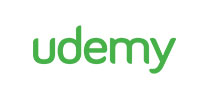1. Malware Concepts
2. Trojan Concepts part 1
3. Trojan Concepts part 2
4. Trojan Concepts part 3
5. Virus and Worm Concepts part 1
6. Virus and Worm Concepts part 2
7. Virus and Worm Concepts part 3
8. Malware Analysis part 1
9. Malware Analysis part 2
10. Malware Analysis part 3
11. Countermeasures
12. Anti-Malware Software
13. Malware Penetration Testing
14. lab1 - Creating an HTTP Trojan and Remotely Controlling a Target Machine Using H
15. lab2 - Creating a Trojan Server Using the GUI Trojan MoSucker
16. lab3 - Gaining Control over a Victim Machine Using njRAT
17. lab4 - Obfuscating a Trojan Using SwayzCryptor and Making it Undetectable to Var
18. lab5 - Creating a Server Using the ProRat Tool
19. lab6 - Creating a Trojan Server Using Theef
20. lab7 - Creating a Virus Using the JPS Virus Maker Tool
21. lab8 - Creating a Worm Using Internet Worm Maker Thing
22. lab9 - Virus Analysis using IDA
23. lab10 - Virus Analysis Using OllyDbg
24. lab11 - Detecting Trojans
25. lab12 - Monitoring TCPIP Connections Using the CurrPorts
26. lab13 - Removing Malware using Clamwin
27. lab14 - Performing Registry Entry Monitoring
28. lab15 - Startup Program Monitoring Tool
29.1 Malware Practical Tools.zip
29. Practical Tools.html

